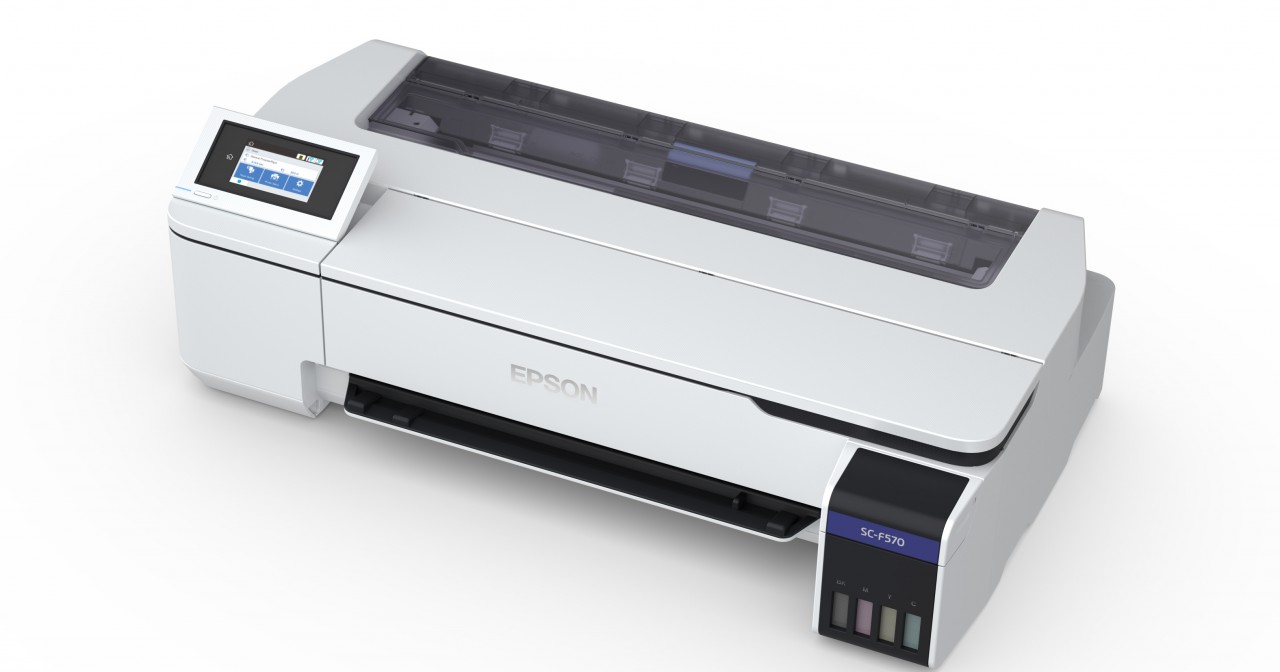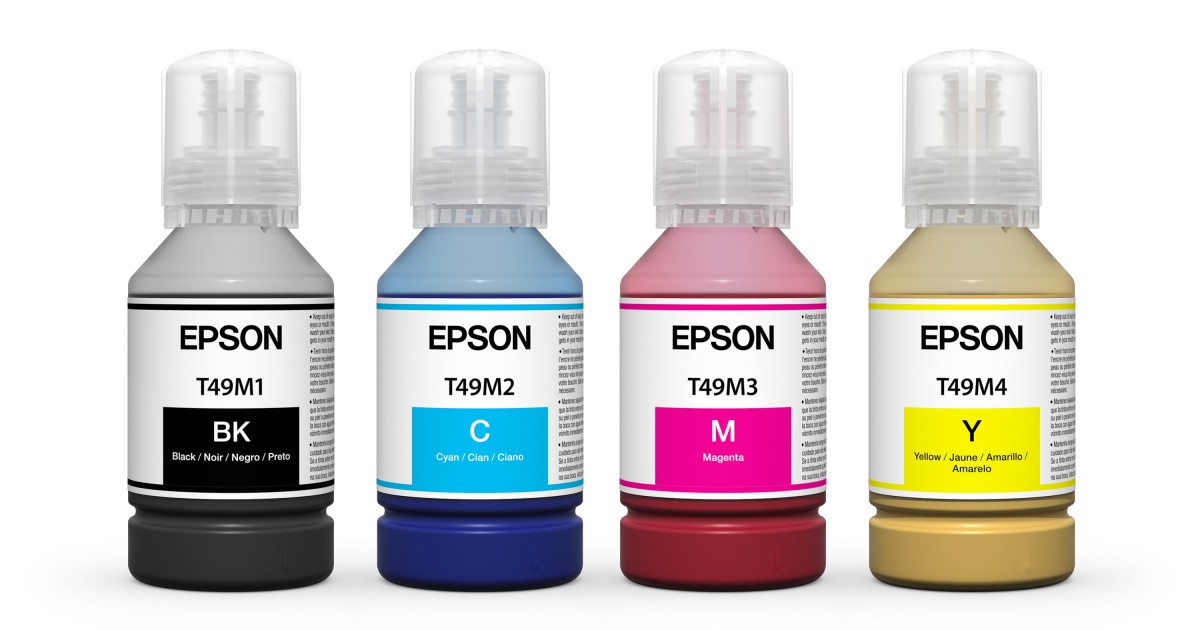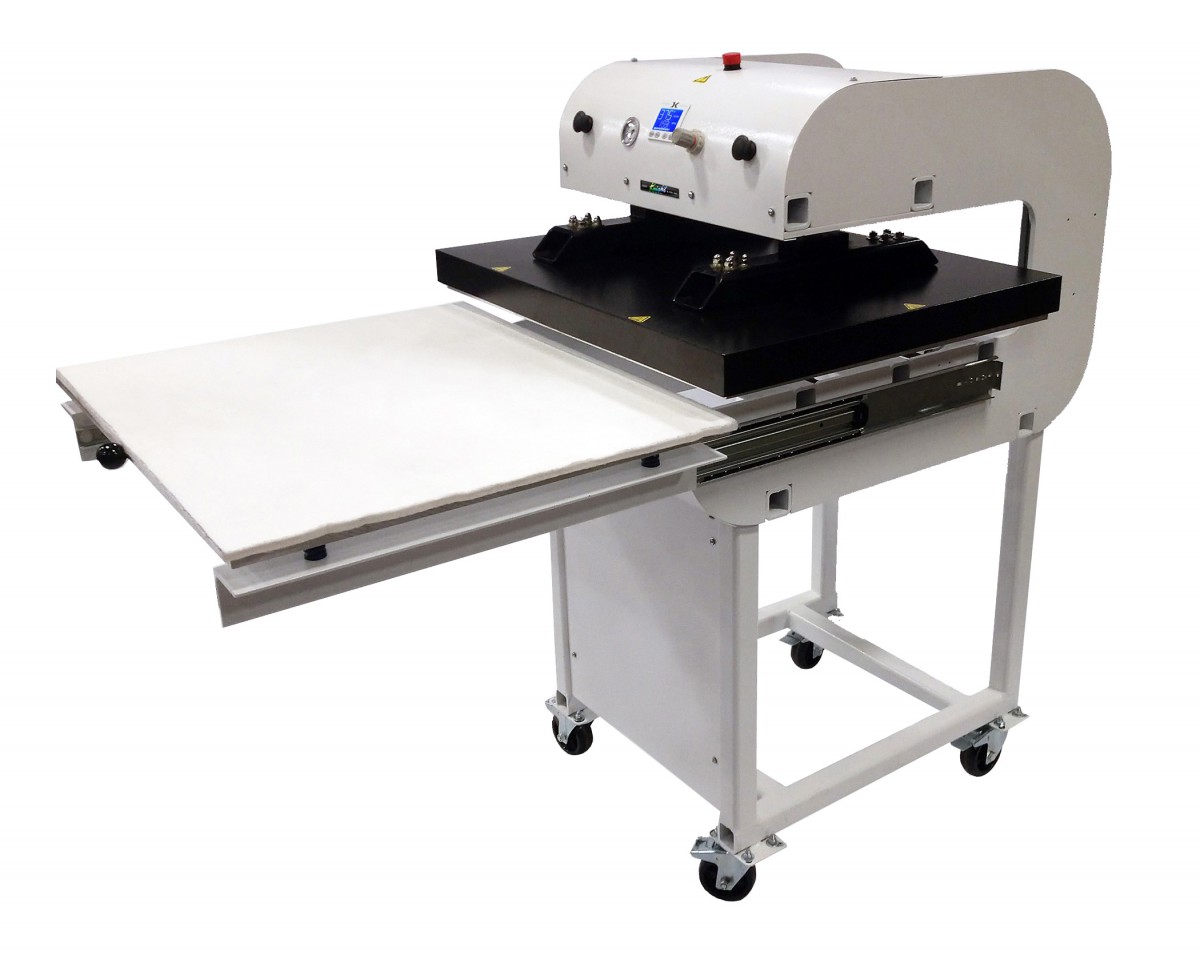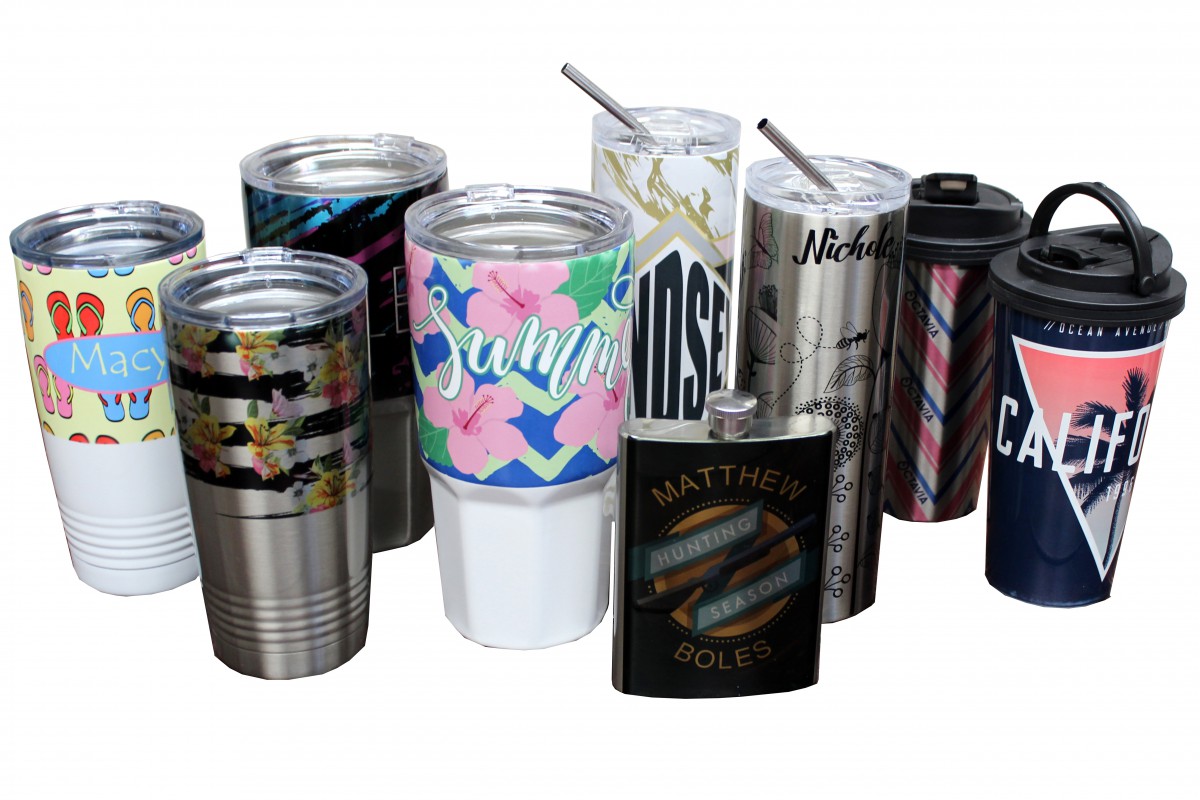First look: Epson's 24" SureColor F570 Sublimation Printer
For the last 20+ years, inkjet style printers have been responsible for producing the vast majority of sublimation transfers. Digital decorators had to purchase standard, off-the-shelf Epson inkjet printers (or a brand that used Epson's print head technology) and then retrofit them with aftermarket sublimation inks and paper. Although sometimes a hassle, this was simply what decorators had to do to convert the units from standard office printers to something they were not intended to be: specialized sublimation printers.
As you can imagine, Epson and other printer manufacturers began to notice this popular digital decorating trend and wanted in on the action. Eliminating the piecemeal approach, Epson introduced their SureColor F-Series family of turnkey, wide-format sublimation printers (44" and 64" media widths) along with their own specialized sublimation ink and media. Later, Ricoh and Sawgrass began producing their incredibly successful Virtuoso family of turnkey desktop sublimation printers (8.5" and 13" media widths), along with their own specialized gel sublimation ink. Now, Epson has taken everything they know about printers, printheads, and ink and built the newest and smallest member of the F-Series family: the SureColor F570. Let us take a quick spin with this exciting new printer.
The Bumper to Bumper Tour
The the SureColor F570 is a four color inkjet sublimation printer capable of printing on up to 24” wide roll and cut sheet media with impressive speed and quality. The heart of the F570 is a new 1.33” PrecisionCore micro-TFP print head with 800 nozzles per color. A "small" wide-format printer, the {{link-10074}} weighs 67 pounds and has a 38.2”W x 22.7”D footprint. For countertop use, you will need clearance above the printer to load any roll or cut sheet media. For those that lack counter space or need mobility, an optional printer stand is also available.
Instead of traditional cartridges, the F570 uses the Epson “EcoTank” bulk ink system. Ink is supplied in small bottles and is poured directly into the reservoir (more on that later). The eco tank system has clear windows to allow you to see the actual ink levels for the four colors.
Getting Ready for the Road
Printer setup is pretty straight forward. Once you have removed the printer from the packing materials, simply fill the ink tanks with Epson UltraChrome DS Ink. Cleverly designed to prevent you from accidentally putting the wrong ink into the wrong tank, the 140ml ink bottles also feature Epson's exclusive auto-stop technology for easy and mess-free refills. Once powered on, the printer has a state-of-the-art LCD touch screen front panel that does a great job of guiding you through setup (takes about 1 hour to complete).
After ink loading, Epson recommends you top off the ink tanks with the remainder of ink in the 140ml bottles. Next is software installation; you will need to download the drivers and manuals from Epson’s website. Once installed, we recommend going into the driver and checking for updates. The final step before printing is to load paper into the printer.
Putting It on the Track
When it comes to print driver settings, Epson makes printing simple. All you need to do is choose a paper size/source and then select either the rigid or textile setting. The driver supports using 3rd party color profiles as well, which can be very convenient. When testing, I printed from traditional graphics software programs such as Photoshop, Illustrator, and CorelDRAW and pressed those transfers onto a variety of common substrates such as ChromaLuxe metal, Vapor wearables, and ColorLyte glass using standard transfer techniques.
I was highly impressed with the color and quality and it is likely that new profiles will optimize color and quality on particular substrates, so stay in touch with your supplier. Also, for more training and education, keep up-to-speed on our product and equipment testing by watching www.condetv.com and/or by liking our Facebook page.
Epson UltraChrome DS Inks: The Fuel of Sublimation
The F570, like most of the other F-Series printers, is a four color (CMYK) printer. One of the interesting carry-overs from its large siblings is the bulk ink feature. As mentioned before, Epson supplies ink in 140ml bottles that is loaded into the ink reservoir via an innovative leak proof valve. A front view window provides ink level status.
Epson developed this ink specifically for the Epson PrecisionCore TFP print heads which, according to Epson, significantly increases print head life. The Epson inks are Eco Passport certified by Oeko-Tex, an international standard for assuring textile safety for adults and children, and are also AZO certified to be free of aryl amines. The best part? The pricing of the inks.
One of the strongest points of this new printer is its flexible paper handling from three paper sources: roll, auto-sheet feeder, and manual sheet feeder. For roll paper, the printer supports roll widths from 8.3" to 24.4". The auto-sheet feeder holds up to 50 sheets of 8.3"x11" to 11.7"x17". For cut sheet paper and (with the roll media removed), up to 24.4" wide custom cut sheets can be fed through the manual sheet feeder.
Sublimation Release Paper
Most sublimation release papers should work with the F570. Keep in mind, with roll media, the roll must have a 2” core, instead of the more common 3” core, and it must not have an overall diameter greater than 4.3” for the cover to close as this will limit the length of the roll to about 100’ of paper. Epson provides both roll and cut sheet papers for this printer and they work great. Our DyeTrans cut sheet paper also performed great with the F570. With time and experience, you be able to figure out which papers work best for your printing needs.
Sublimation paper types can fall into five categories:
1) Minimal dot gain for hard substrates
2) Superior release for soft substrates
3) Tack paper to reduce ghosting on soft substrates
4) Specially coated hybrid sublimation/transfer papers for cotton
5) Direct print specialty substrates such as Siser's EasySubli and FOREVER's Subli-Flex heat transfer materials
For high humidity environments, I recommend storing your sublimation papers in an air tight container. Roll paper can actually absorb humidity and swell, causing an unfavorable and sometimes fatal head strike — when the print head touches the paper while printing.
Paper Handling
One of the strongest characteristics of this new printer is its flexible paper handling from three paper sources: roll, auto-sheet feeder, and manual sheet feeder. For roll paper, the printer supports roll widths from 8.3" to 24.4". The auto-sheet feeder holds up to 50 sheets of 8.3"x11" to 11.7"x17" cut sheet paper and. With the roll media removed, up to 24.4" wide custom cut sheets can be fed through the manual sheet feeder.
Like its larger siblings, the F570 supports roll media with horizontal cutter as its primary paper source. Using smaller 2” core roll paper (bigger F-series printers use 3” cores) you can load rolls up to a diameter of 4.3”. The printer also supports narrower widths of rolls. Loading a narrower width roll is quite valuable for decorating smaller substrates as it reduces paper waste and the labor costs associated with trimming individual transfers. Remarkably, the printer can seamlessly switch back and forth from the auto-sheet feeder to roll paper without having to unload the roll paper.
Connectivity
Epson breaks new ground by making this the first F-Series printer to include Wi-Fi. Even so, I recommend sticking with either USB or Ethernet, as Wi-Fi printers can experience frequent pauses during printing that can cause horizontal banding. Ethernet is the best choice if you need to share the printer among multiple users.
Warranty and Support
The F570 has a one-year warranty. An extended preferred plus service plan is available that provides an additional year of coverage.
Driver & RIP support
This printer includes drivers for both Mac and Windows. Epson has simplified the menu options, as this is a sublimation-only printer. Epson also provides default hard and soft substrate profiles with the ability for users to add additional profiles to better dial-in substrates. Wasatch, a well respected RIP manufacturer, also provides support and will likely be the go to option to optimize print productivity and color management using CMYK profiles.
Heat Press Support
Initially, you might assume that a larger heat press would be needed to take advantage of the larger print size. With this new printer, however, you can continue to use your existing press for smaller items or upgrade to a larger press to take advantage of its 24” capability. For basic sublimation, I recommend the Geo Knight DK20S, a 16"x20" manual swing away press, or the larger Geo Knight DK25S, a 20"x25" manual swing away press.
Keep in mind, larger heat presses will greatly increase the number of larger products you will be able to decorate. A perfect match for the F570 is the new Geo Knight DK32AP , a 26"x32" air operated drawer press, illustrated to the left. This heavy-duty mid-format press enables digital decorators to produce larger substrates such as metal, wood, MDF, floor mats, car mats, neck ties, lanyards, and more.
Pressing Shirts and Soft Substrates
One of the largest downsides of producing shirts is the paper marks left behind after pressing. Caused by the hard edge of the printed transfer being pressed into hot fabric, decorators use a variety of time consuming production techniques to minimize it. Using 24” paper, you can print a transfer that is larger than the platen of your press, ensuring that none of the transfer paper's edges touch the shirt. This is how we have been pressing for decades, with large printers and heat presses such as the Geo Knight 44"x64" Maxi Press. This, is perhaps, the most interesting unintended consequence of this new printer.
A Drinkware Money Making Machine
With fast printing speeds, high quality images, and low printing costs, the F570 is a high profit generating investment. Add our SubliShrink shrink wrap film sleeve technology and an inexpensive convection oven, and you will have a drinkware producing setup with high profit margins. To use, simply insert a blank sublimatable product with attached transfer into a film sleeve, shrink the film sleeve with a heat gun to conform to the product's shape, and then place it into a convection oven for the appropriate temperature and time settings for the product. Using SubliShrink makes shot glasses easy to do and you will get full, all-around images that will impress.
Advice for Sublimation Success
Sublimation decorating has been my passion for the last 29 years. As I teach around the country, I have a few bits of advice for your road to sublimation success. First, is to become an advocate of documentation — it is the best way to master any field. Document your questions, successes, and failures. Second, find an expert partner that offers a broad variety of products and provides superior technical support. Third, push yourself out of your comfort zone by expanding your product offerings and marketing efforts. And, be sure to attend a great NBM show and attend my class. I look forward to seeing you!




